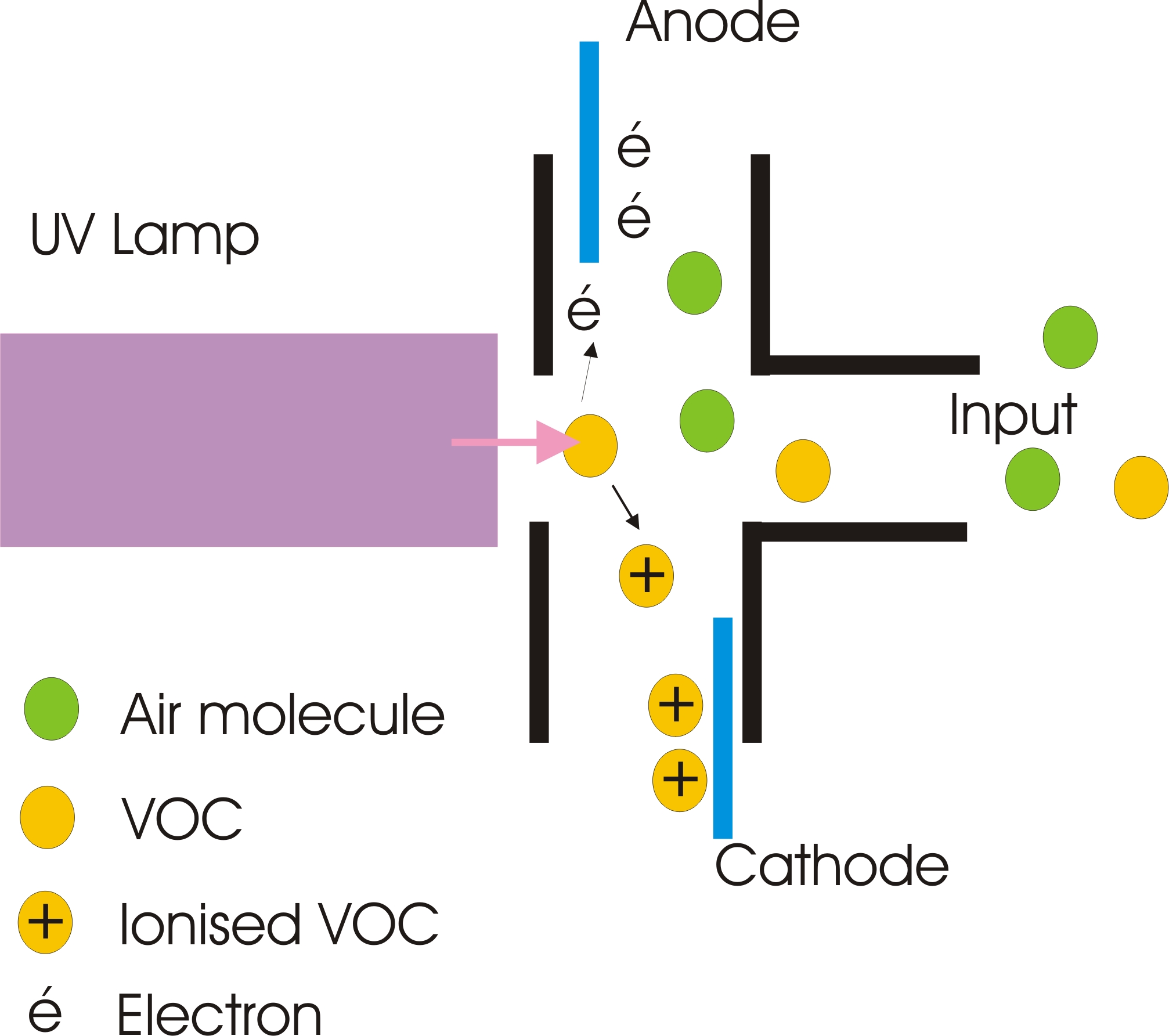This article is summarized from an article written by E-Instrument (http://www.e-inst.com).
Complex Volatile Organic Compounds (VOCs) in Businesses and Residential Premises Are a Dangerous Health Hazard
VOCs are any of a variety of organic chemical compounds that release gaseous molecules from their liquid or solid form at room temperature. While many VOCs are naturally occurring and important to environmental interactions, a large number are emitted in manmade processes and are hazardous to human health if respirated at certain concentrations. The EPA has determined that concentrations of VOCs are much higher indoors compared to outdoors (up to 10 times higher), and it is estimated that 50 to 300 different VOCs may be detected in the air of homes, schools, offices, and commercial buildings at any given time. Some examples of these compounds include formaldehyde, toluene, benzene, xylene, perchloroethylene, etc. The adverse health effects caused by breathing in these chemicals can range from temporary irritation of the eyes or throat, nausea, and headache, to long-term disease such as cancer or damage to the liver, kidneys, or central nervous system.
The concentration of VOC should be kept under 1 ppm. A concentration higher as 10 ppm can affect the health.
Common Sources of VOCs
Many commonly used products can be the sources of these compounds including building maintenance and cleaning products, paints, adhesives, sealants, carpets, drywall, and insulation materials, among others. Some examples of specific sources and processes that commonly emit high levels of VOCs include Vent Gas, Water Separation Techniques, Industrial Waste Water, Batch Processes, Petroleum Refining, Natural Gas Processing, Petrochemical Processes, Paints, etc.
How to measure VOCs ?
To accurately measure the most common VOCs found in homes or offices to concentrations of parts per billion (ppb), indoor air quality monitors use Photo-Ionization Detection (PID) technology. Each PID sensor is equipped with a UV lamp which emits high energy photons onto a sample of ambient air drawn into the sensor chamber (see diagram below). When hit with this UV light, most VOC molecules, with the exception of low molecular weight VOCs, will break up into free electrons and positively charged ions, a process call ionization. This ionized gas produces an electric current. The ion current is collected by the sensor, amplified and converted to a reading either in ppb or ug/m3. The greater the concentration of VOCs in the air sample, the greater the current that will be generated and detected by the PID sensor.

Détection of VOCs with the UV lamp
A VOC will be ionized and detected by the PID sensor if the energy it takes to break up the VOC molecules, or Ionization Potential, is lower than the energy emitted by the UV lamp in the sensor.
PID lamps are created containing a variety of gases including Krypton, Xenon, and Argon. Each gas emits a specific photon energy when heated, which would ionize a different subset of VOC molecules. For exemple E Instruments IAQ family of products uses a PID Krypton lamp, which emits a photon energy of 10.6 eV. Krypton lamps are optimum for their high sensitivity, long lamp life, and ability to target a wide range of common VOCs in residential and commercial settings.
Although Xenon lamps have a long life, they can ONLY detect VOCs with Ionization Potentials lower than the 9.6 eVs. This would exclude many of the most common VOCs found in homes and offices.
Argon lamps are able to detect a very wide range of VOCs as it emits 11.7 eV of energy. However, the Argon lamp has a short life and would required frequent replacing.
Which VOCs can a Krypton (10.6 eV) Lamp detect ?
Krypton lamps are able to detect hundreds of VOCs with a lower ionization potential than the 10.6 eV of energy that it emits.
The following table gives guidance as to which VOCs the E Instruments PID sensor generally can detect:
| VOCs PID Detects | Exceptions (not detected) |
| Hydrocarbons (CnHm) | Methane, Ethane, Propane, Acetylene, chloro-, fluoro-, bromo- |
| Alcohols | Methanol, chloro-, fluoro-, bromo- |
| Aldehydes | Formaldehyde, chloro-, fluoro-, bromo- |
| Ketones | chloro-, fluoro-, bromo- |
| Ester | chloro-, fluoro-, bromo- |
| Amines | none |
| Sulfides | none |
We provide a big choice for air quality measurement devices.